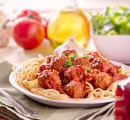There are times when we take photos and look at them after only to realize that they appear a little too dark or underexposed. An afternoon scene could look like an impromptu eclipse occurred and everyone’s smiling faces are in shadow. We can do a reshoot but sometimes it just isn’t possible. The moment may have passed, or it might be expensive to do a retake, or the subject is not available, or we’re just too lazy to get up, drag all our camera equipment to the location and shoot again with the right exposure settings this time around. {Dark Photo} Don’t worry, post-processing to the rescue! Fixing dark photos with an image editing program might just be our next best and probably most convenient option. Keep in mind that not all dark photos can be saved and brightened up, whether you are using Photoshop or Lightroom. Sometimes, the dark... Read the Rest →
When we take photos, sometimes we get everything right in-camera and sometimes we need to improve them a bit more in post-processing using an image editing program (I use Adobe’s Lightroom). Aside from tweaking my shots to make them brighter, fixing any awful color cast, straightening out the crooked horizon, removing dust and distracting objects, we can also blur the background to create more depth of field (DOF). Take a peek at my Chocolate Chip cookies here, it was a bad day, bad lighting, and I didn’t feel like lugging everything to the studio (I was full of excuses that day). We all have days like this working with photography, be it a professional or a novice. It’s fixable. {Take as many photos as possible} “What’s depth of field?” you might ask. Let me quote Wikipedia! “Depth of field (DOF) is the distance between the nearest and farthest objects in a... Read the Rest →
We oftentimes overlook our white balance setting whenever we take photographs. This is probably one of the main reasons the colors in the images we capture look too orangey, too blue, or too yellow. It is a dead giveaway for being amateurish and it is the most appalling way to ruin a beautiful subject or scene. Getting the colors right in photography is important to capture the pure essence of your subject, if not enhance it. There are different sources of light and there are many ranges of color temperatures to use, from the lightest and coolest of blues to the warmest of yellows. Choosing the correct type will help cast the proper lighting to capture an image. Our eyes automatically adjust to the differences in color temperatures unlike digital cameras. Sometimes, we need to make slight changes in the settings to make the lighting just right. You’ll notice in... Read the Rest →



